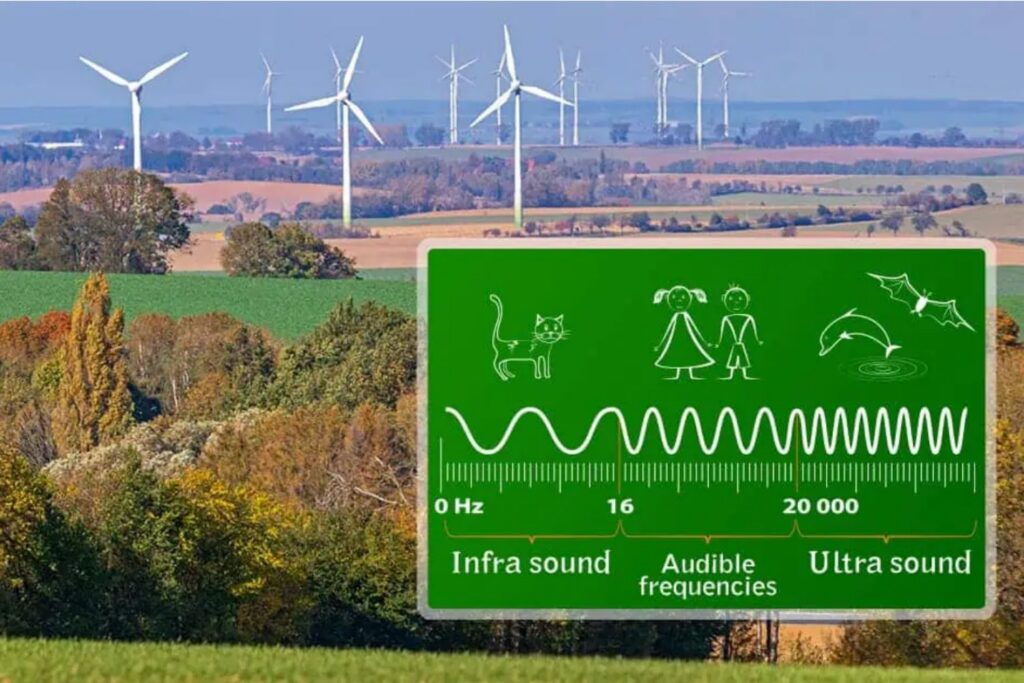During a public consultation in late May 2024, the Alberta Utilities Commission (AUC) invited feedback on setbacks of energy projects from inhabited dwellings. When I had an opportunity to speak, I laid out the most current studies, court cases, expert analyses and testimonies of the terrible harm wind turbines have been causing to both human and animal populations. Later in the online exchange, a wind industry executive piped up to say that the adverse health effects mentioned had already been “debunked.”

Either he is invincibly ignorant — or he is lying.
The evidence is so widespread, the health effects so well-documented, that the wind industry is being about as honest as the tobacco industry — before it was indicted in 2006. Federal judge Gladys Kessler found the major tobacco companies—including Altria (Philip Morris) and RJ Reynolds—guilty on civil racketeering charges (i.e., organized criminal activity). She issued a final judgment and 1,682-page opinion that found the companies had been covering up the health risks associated with smoking and marketing their products to children for decades.1
Somewhat similarly, but almost completely ignored by the wind industry, regulators, and governments alike, is the ruling of an Ontario tribunal in 2011:
…the debate should not be simplified to one about whether wind turbines can cause harm to humans. The evidence presented to the Tribunal demonstrates that they can, if facilities are placed too close to residents. The debate has now evolved to one of degree. The question that should be asked is: What protections, such as permissible noise levels or setback distances, are appropriate to protect human health?
Environmental Review Tribunal, Case Nos.: 10-121/10-122 Erickson v. Director, Ministry of the Environment, July 18, 2011, p. 207
AUC — Ignoring Infrasound?
Hence, we were (somewhat) perplexed that, after instituting a 6-month pause to review so-called “green” energy regulations, the AUC issued amendments to its noise regulations in Rule 012 that completely ignored infrasound, defined as a sound wave with a frequency of less than 20 hertz (Hz). The lower the frequency of the sound, the greater its wavelength and the harder it is to shield from it. Infrasound can penetrate walls, people, and animals.
Reports of adverse effects on animals located near IWTs (industrial wind turbines) indicate that there may be a temporal relationship between proximity to wind turbines and stress-related reactions and adverse effects on fertility, development, and reproduction. AHEs (adverse health effects) in animals that have been attributed to proximity of IWTs include reproduction and teratogenic effects in the USA,[120,121] Canada,[122,123] Denmark,[124] and Japan;[125] deformities in Portugal;[65] mortalities in Canada, France,[126,127,128,129] and Taiwan;[130,131] stress in the UK;[132] and other effects. (See original link here for footnotes)
“Wind turbines and adverse health effects: Applying Bradford Hill’s criteria for causation”, Dumbrill et al., Sept. 2021

In humans, documented adverse effects include typical symptoms of headaches, painful pressure on the ears, dizziness, weakness, tachycardia, tinnitus, nausea, nosebleeds, insomnia, and more. In the words of Dr. Christopher Hanning: “The only mitigation for wind turbine noise is to place a sufficient distance between the turbines and places of human habitation.”2 What is “sufficient”? The latest research shows that adverse health effects occur to within 15km or more from industrial wind factories,3 and that the bigger they are, the worse the impacts.4
However, these latest amendments from the AUC focus exclusively on audible noise. Why? Why the complete disregard for infrasound? Earlier this spring, Dr. Ursula Bellut-Staeck of Germany, where wind turbines have proliferated, added her voice to a growing list of experts who have been sounding the alarm on wind development due to their adverse impacts. She calls infrasound “a huge problem for all forms of organisms… With ever-larger wind turbines, the frequencies are getting lower and lower. This makes infrasound more problematic and dangerous.”5
The consultation I was participating in was for Rule 007, which would potentially deal with setbacks. Perhaps the AUC will finally acknowledge in revisions to that Rule the impacts of infrasound. But at this point, it seems we are living in a world where cigarettes are still good for your throat and wind turbines are a harmless addition to your pristine viewscapes.
- https://www.lung.org/research/sotc/by-the-numbers/10-appalling-tobacco-facts[↩]
- “Adverse Health Effects of Wind Turbines”, Keith Stelling, MA, MNIMH, Dip Phyt, MCPP (England), with additional files from Carmen Krogh, BScPharm; October 20, 2009[↩]
- cf. Turbine Sickness: How Far Away is Safe?[↩]
- cf. When the Turbines Went Big, So Did the Sickness[↩]
- https://www.windconcerns.com/infrasound-a-huge-threat-to-the-entire-biodiversity-says-doctor/[↩]
Mark Mallett is a former award-winning reporter with CTV Edmonton and an independent researcher and author. His family homesteaded between Vermilion and Cold Lake, Alberta, and now resides in the Lakeland region. Mark is Editor in Chief of Wind Concerns.



I live on the beautiful scenic Port Peninsula NL Canada. Our Prime Minister and Provincial ministers have decided to lift the moratorium on wind turbines and World Energy GH2 is being pushed through an environmental assessment process to place 155 offshore turbines 250 ft gargantuan eyesores on our small Peninsula smack in the middle of 4500 residents. They have stonewalled us from the first day when we learned our fate in the evening news. They are ignoring the health risks of residents. They want to install these turbines where rare and endangered species of bats, 1337 rare and endangered species of plants and 60 or so rare or endangered animals live. They want to clear cut the Peninsula and destroy animal habits. The animals will perish because we live on an Island shaped like a triangle that is at its widest is 10 miles across. They are also actively seeking European investors to place turbines all around the Peninsula. There are two bays, the gulf of st. Lawrence and the Atlantic Ocean surrounding us approximately 358 degrees. We are sitting ducks, a lab experiment and canaries in a coal mine. This will destroy this special place, our environment includes whales and migrating birds. This is madness. This is wrong. 84% of residents said no. They are trying to take away our democratic rights too. S.O.S.
Good article . Keep.them coming.
Great article! We are groups here in Denmark that try to fight this diabolical agenda, but they seem almost possessed, these people that 24/7 fantasize about wind turbines 😡🇩🇰
‘Green energy’ is black as COAL!!
Do people know about the extraction of Neodymium in Chinese mines?? And the enormous amounts of radioactive waste that goes along with it?? Pls watch this short documentary https://youtu.be/Ia5M72yCzRo?si=SIYQBSc9ZQ2fZ0rr
Here is a video on the destruction of the environment due to this ‘green energy’, which is in fact black as coal! It is a British gentleman that has done a real good job in this 9-minute video that shows the devastating effects of extracting neodymium in China. Shame on the West! Shame on China for doing this! https://youtu.be/Ia5M72yCzRo?si=WxFDMmXXcRzZN2Sm